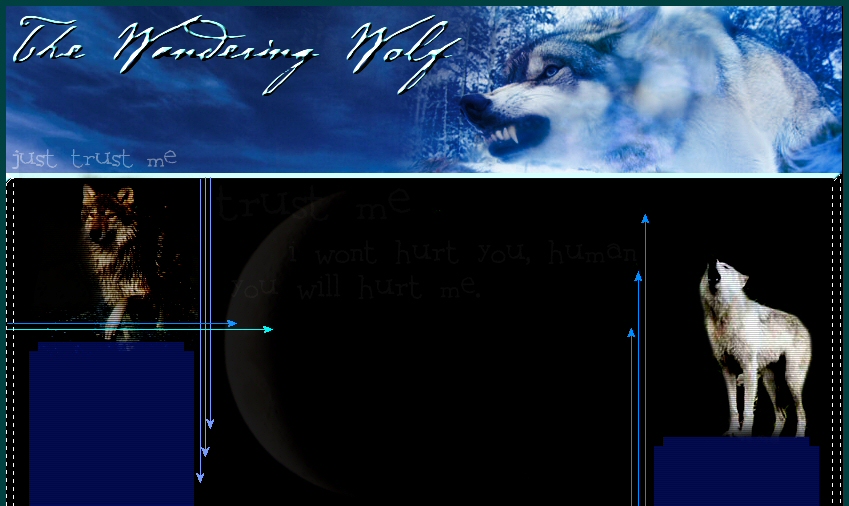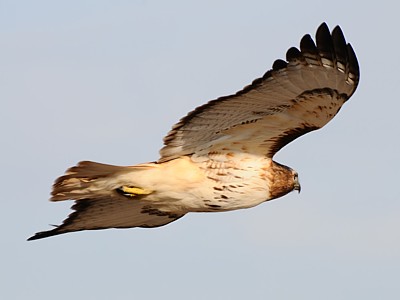

.: The Wolves :.
.: WSC Animals :.
.: The Cub :.
.: The Handwriting
.: My ABCs
.: The Basics
.: Googlism of Jade
.: The Pictures
.: The Pets
.: The Quizzes
.: The Art
.: Sister Sites :.

.: The Site :.
.: For A Wanderer
.: Competition :.
.: Contact :.
.: Red Tailed Hawk :.

Geographic Range: Native of North America, south to the mountains of western Panama: Bahamas and West Indies, est to St. Kitts and the Virgin Islands, north to Alaska.
Status: Protected by the Migratory Bird Treaty Act. This is the most wide-spread of all the hawks in the United States. Their large size and habit of soaring conspiciuously over open areas makes them obvious to those who do not usually notice hawks. In the east, populations were seveerely reduced due to bounty hunting as well as the use of DDT in the 1960's and 1970's. Red-Talked Hawks are common in Minnesota. (Where the Wildlife Science Center is located.)
Description: There are various subspecies across the country. THe plumage is extremely variable, but generally it is brownish with dark bands and a cream colored breast. The adult has a rufous-colored tail mottled with black. Adults are dark brown on the back and the top of their wings. The underside of the bird is usually light with a dark belly band and a cinnamon wash on the neck and chest. However, there are both light-colored and dark-colored prairie dwelling sub-species that can be mostly white, with no markings on the white chest and belly, with a very light head. Melanistic (dark) birds have very little light coloring and appear entirely dark brown. In all of the color phases, the underside of the primaries are light-colored. When the bird is soaring and wheeling the sun with reflect off the tail at certain angles showing a flash of red. Immature Red-Tailed Hawks have gray-brown tails with horizontal dark bands. The Red-Tail molts during its second year.
Length: 19 - 25 inches in height with a wingspan of 48 - 58 inches. Females generally are slightly larger than the male.
Weight: 2.5 - 3.5 pounds
Habitat: Red-tailed Hawks feed in open country (open fields, open woodlands from forest to desert.) They often perch on poles, power lines, and treetops.
Behavior: The call is a faint, high scream or a rasping downward slurring squeal, often imitated by jays. Courtship displays can be spectacular. The pair often engages in a mutual soaring, screaming frequently. THe male usually stays somewhat above or behind the female. He may dive at her, whereupon she rolls over and presents her talons. The birds often soar upward until lost from sight, than swoop to the ground climbing upward again repeatedly. Courtship flights may be continued throughout the breeding season, sometimes as early as February. They typically do not begin breeding until their third year. Pairs build a large stick nest near the top of a tree (usually deciduous) at the edge of open canopy woods. In central Minnesota farm and suburban woodlots often are home to a pair of nesting Red-tails. Two to four eggs are usually laid in April or May. Incubation is approximately 30 days.
Typical Diet: Rodents, small mammals, reptiles, amphibians, some poultry and game birds, some carrion.
Similar Species: Red-shouldered Hawk (Buteo Lineatus)